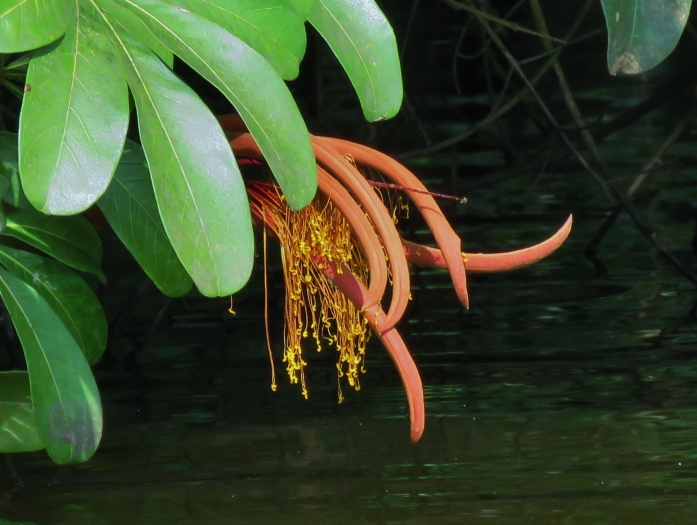Wild Chestnut
(Pachira insignis)
Wild Chestnut (Pachira insignis)
/
/

Annika Lindqvist
CC BY 4.0
Image By:
Annika Lindqvist
Recorded By:
Copyright:
CC BY 4.0
Copyright Notice:
Photo by: Annika Lindqvist | License Type: CC BY 4.0 | License URL: http://creativecommons.org/licenses/by/4.0/ | Rights Holder: Annika Lindqvist | Publisher: iNaturalist | Date Created: 2018-04-20T14:50:34-07:00 |












Estimated Native Range
Summary
Pachira insignis, commonly known as Wild Chestnut, is an evergreen or semi-deciduous tree native to the seasonally flooded areas of the Amazon rainforest and other tropical regions in Central and South America. It typically grows to a height and width of 20-30 feet (6-9 meters), forming a rounded canopy. The tree is notable for its large, showy flowers with long, white petals and red-tipped stamens that bloom in the spring and summer, attracting pollinators such as bees and hummingbirds. The bark is smooth and gray, and the tree may produce large, woody fruits resembling chestnuts.
Wild Chestnut is valued for its ornamental flowers and is used in tropical and subtropical landscapes. It can be grown as a shade tree or an accent plant. While it prefers full sun, it can tolerate partial shade. It requires medium amounts of water and well-drained soil to thrive. In cultivation, it is relatively low-maintenance but may need protection from frost in cooler climates. The tree is not commonly associated with serious diseases or pests, but root rot can occur in poorly drained soils. It is not considered invasive outside its native range, but gardeners should always monitor and manage plantings responsibly.CC BY-SA 4.0
Wild Chestnut is valued for its ornamental flowers and is used in tropical and subtropical landscapes. It can be grown as a shade tree or an accent plant. While it prefers full sun, it can tolerate partial shade. It requires medium amounts of water and well-drained soil to thrive. In cultivation, it is relatively low-maintenance but may need protection from frost in cooler climates. The tree is not commonly associated with serious diseases or pests, but root rot can occur in poorly drained soils. It is not considered invasive outside its native range, but gardeners should always monitor and manage plantings responsibly.CC BY-SA 4.0
Plant Description
- Plant Type: Tree
- Height: 20-30 feet
- Width: 20-30 feet
- Growth Rate: Rapid
- Flower Color: Red, White
- Flowering Season: Spring, Summer
- Leaf Retention: Evergreen
Growth Requirements
- Sun: Full Sun
- Water: Medium
- Drainage: Fast, Medium
Common Uses
Edible*Disclaimer: Easyscape's listed plant edibility is for informational use. Always verify the safety and proper identification of any plant before consumption., Low Maintenance
Natural Habitat
Seasonally flooded areas of the Amazon rainforest and other tropical regions in Central and South America
Other Names
Common Names: Malabar Chestnut , Bois Chataigne , Cacao Cimaron , Cacao Sauvage , Carolina , Chataigne , Chataigne Maron , Chataignier , Chataignier Marron , Huevo De Toro
Scientific Names: Pachira insignis , Carolinea insignis , Bombax spectabile , Pachira affinis , Bombax affine , Bombax insigne , Carolinea affinis , Pachira loddigesii
GBIF Accepted Name: Pachira insignis (Sw.) Sav.